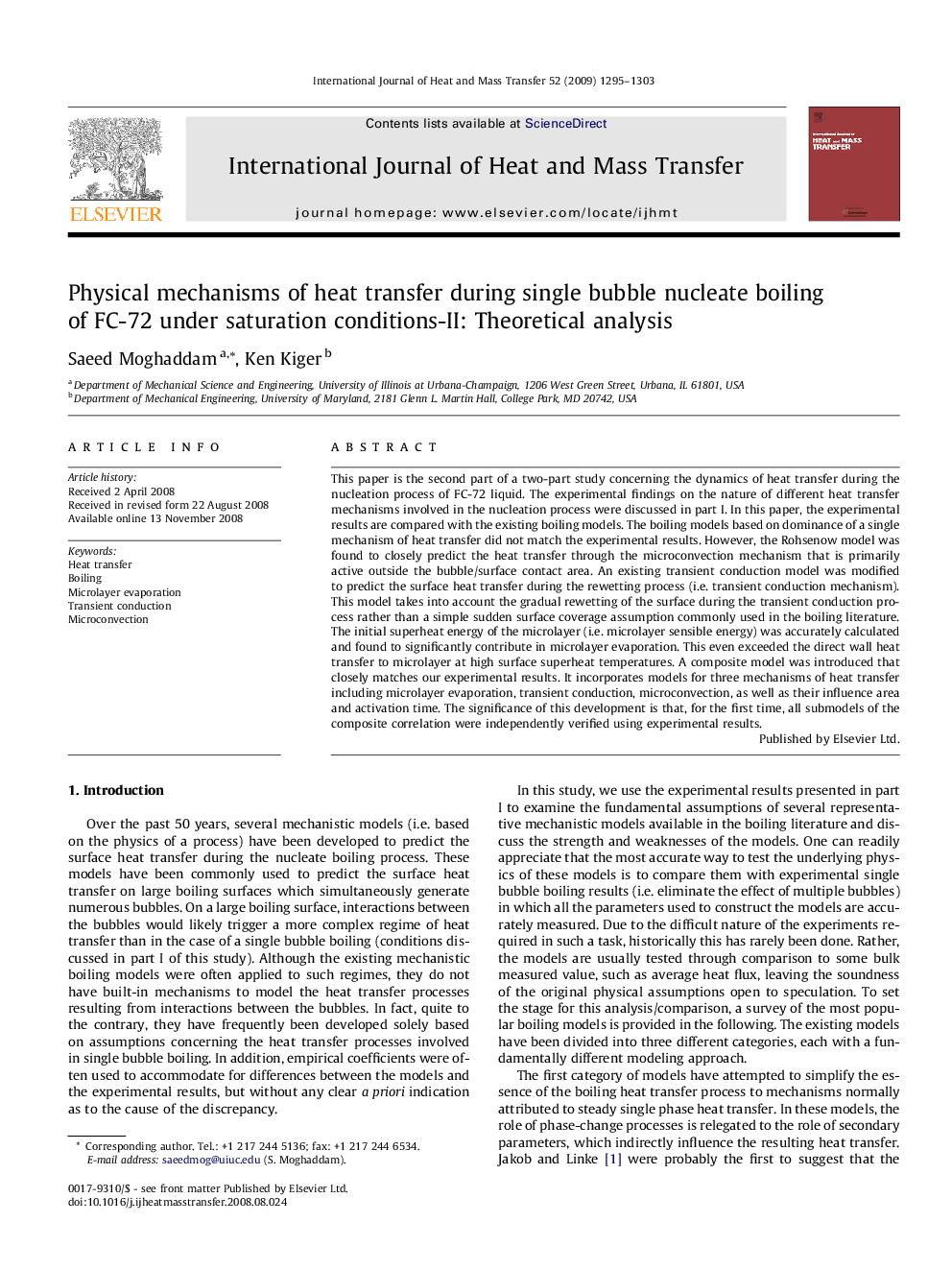| Article ID | Journal | Published Year | Pages | File Type |
|---|---|---|---|---|
| 659736 | International Journal of Heat and Mass Transfer | 2009 | 9 Pages |
This paper is the second part of a two-part study concerning the dynamics of heat transfer during the nucleation process of FC-72 liquid. The experimental findings on the nature of different heat transfer mechanisms involved in the nucleation process were discussed in part I. In this paper, the experimental results are compared with the existing boiling models. The boiling models based on dominance of a single mechanism of heat transfer did not match the experimental results. However, the Rohsenow model was found to closely predict the heat transfer through the microconvection mechanism that is primarily active outside the bubble/surface contact area. An existing transient conduction model was modified to predict the surface heat transfer during the rewetting process (i.e. transient conduction mechanism). This model takes into account the gradual rewetting of the surface during the transient conduction process rather than a simple sudden surface coverage assumption commonly used in the boiling literature. The initial superheat energy of the microlayer (i.e. microlayer sensible energy) was accurately calculated and found to significantly contribute in microlayer evaporation. This even exceeded the direct wall heat transfer to microlayer at high surface superheat temperatures. A composite model was introduced that closely matches our experimental results. It incorporates models for three mechanisms of heat transfer including microlayer evaporation, transient conduction, microconvection, as well as their influence area and activation time. The significance of this development is that, for the first time, all submodels of the composite correlation were independently verified using experimental results.
